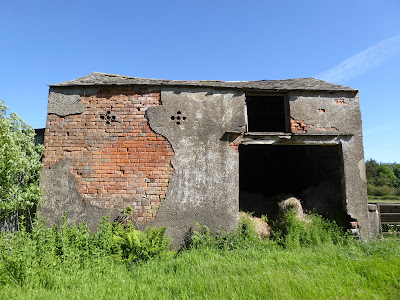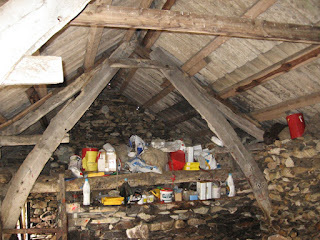The sloping area to the right of the waterfall is where once the slate was hauled up from the quarry below, there was no waterfall then. I hope you can make out the waterfall for the day was drizzly and misty not really the best conditions for my pocket camera. Torver Beck rushes down the mountain to one side of the quarry and those original quarry men took care to block off its natural inclination to run downhill towards this hole in the ground. The mine was abandoned as the slate ran out and the years passed until our two schoolboys roaming the fells decided to remove the stone slab stopping the beck running into the quarry and with much determination eventually their task was achieved, they stood back to admire their handiwork and see the a small trickle turn into a waterfall. The story is told here The quarry filled with water and today it is about 6m (19ft 6ins) deep and although the perimeter is fenced off it still remains a draw for schoolboy adventurers in summer to dive into it. The water remains at a constant level because of the sandstone layer that lies with the slate.
I didn't take any photographs of the old slate spoil heaps which the path weaves through
but here it is one in miniature, the cairn marking the pathways at the bottom.
An entry to ABC Wednesday, a journey through the alphabet, this week sojourning at Q here



















